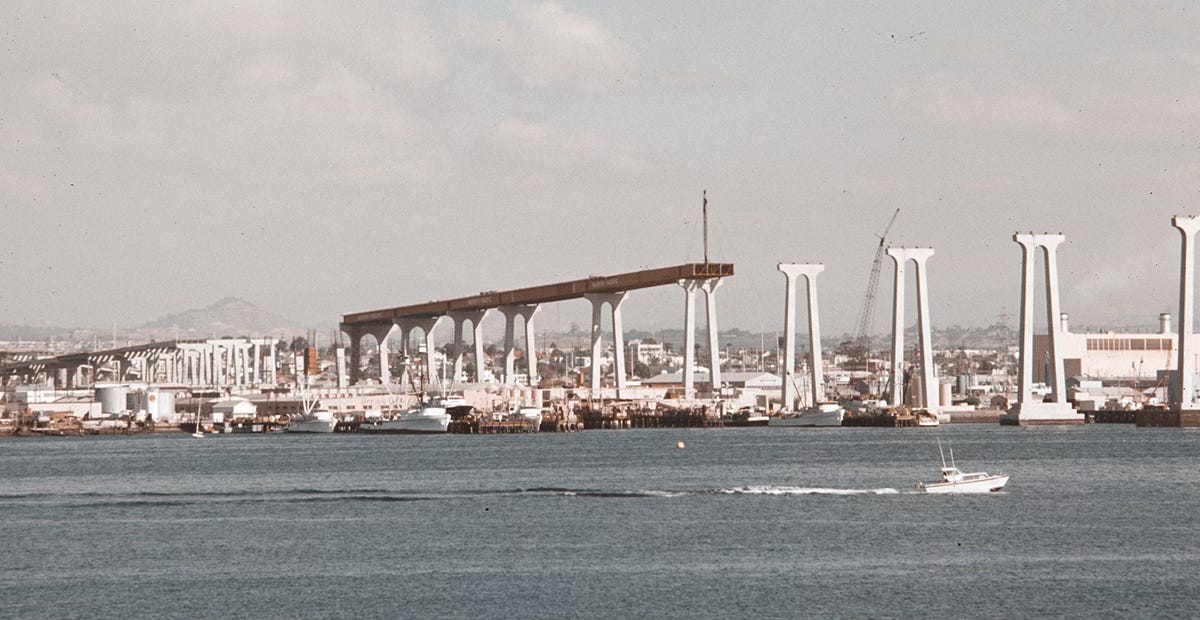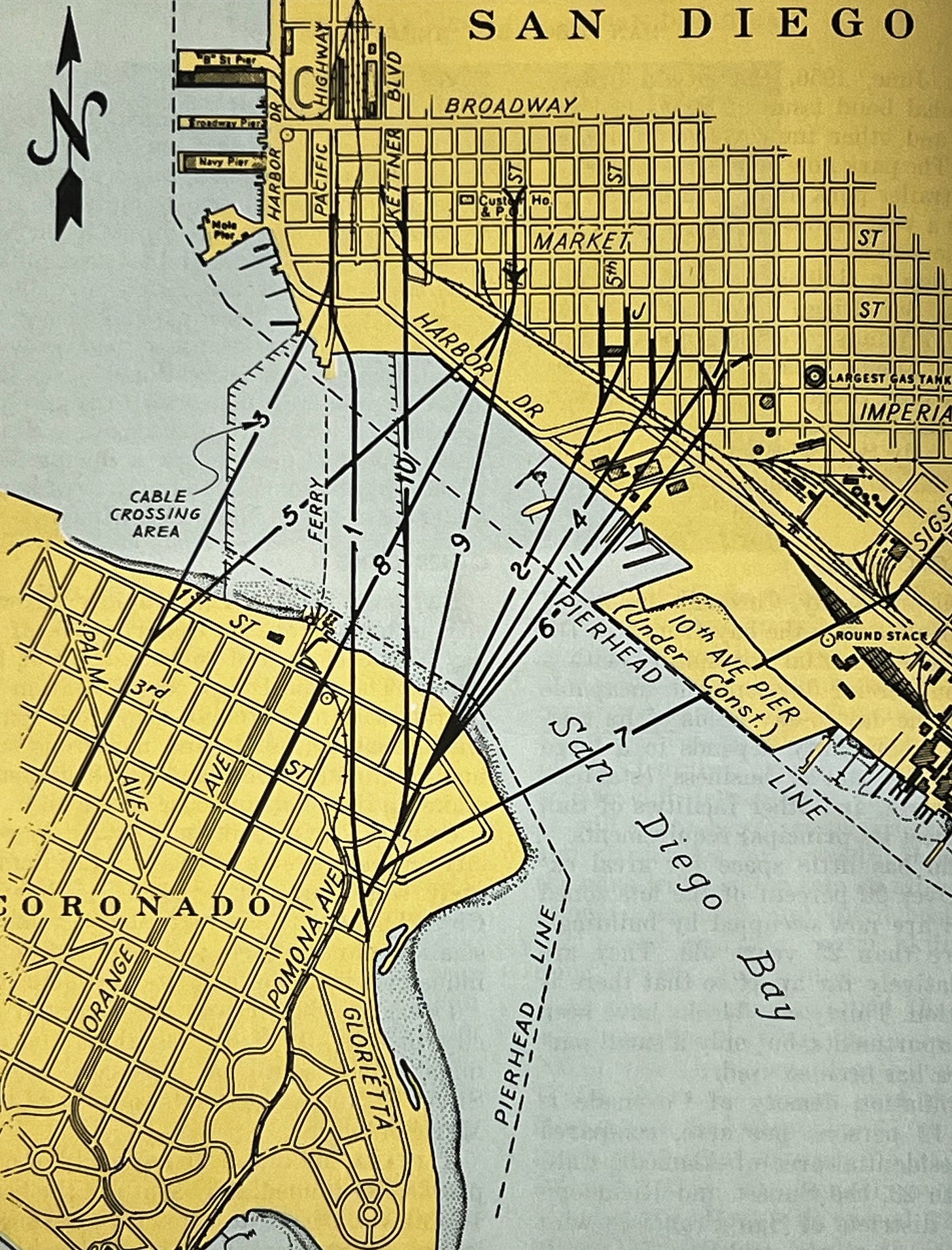Did you know? The idea for a San Diego-Coronado Bridge started nearly a century ago
By Leslie Crawford

As early as 1926, multiple companies filed plans to build privately owned toll bridges or tunnels from San Diego to Coronado. The idea started with the JD and AB Spreckels Securities Company of San Diego, owners of the Coronado ferries followed by the Parklap Corporation Project of New York, the California Bridge and Tunnel Company of San Francisco and the McClintic-Marshall Company of California.
The Spreckels bridge plan was granted clearance by the California State Engineer to proceed, but ultimately the company decided to upgrade its ferry service with faster and more modern vessels. The three other contenders all abandoned their plans when the bond market collapsed in 1929 and the Great Depression began. After 1934, renewed interest in building a vehicular crossing led to more studies in 1936, 1950 and 1957 for publicly owned toll crossings.
A study released in 1957 reported that San Diego’s population had increased 165 percent between 1940 and 1954. Traffic was keeping up with the population growth, which meant that ferry traffic had increased exponentially.
Over the years, some bridge studies became obsolete because of the changing landscape of the waterfront development, but all studies after 1934 concluded that building a permanent crossing from San Diego to Coronado was economically feasible. By the time a final bridge study was released in 1962, Coronado’s ferries were at full capacity and aging to the point of needing replacement.
The 1962 study considered statistics for San Diego Bay and the surrounding areas, including where the bay was the narrowest and how traffic would be best served, siting locations, foundation requirements and design. The plans also needed to work around expensive properties on the waterfront.

Preliminary layouts were prepared for 11 crossings within these criteria. Underground tube crossings were considered for all the potential sites but only five sites were deemed appropriate for bridge crossings.
Different options for a bay crossing included a four-lane high level bridge, a four-lane tube, a two-lane tube, and parallel two-lane tubes. There was also limited discussion about a low-level drawbridge, but due to traffic disruptions the idea was eliminated early in the process, as was a two-lane high-level bridge.
Cost estimates showed that the cost of building a four-lane, high-level bridge was considerably less than a four-lane tube.
Ultimately the bridge was built with five lanes for a cost of $42 million. Construction began in February 1967, with opening day on Aug. 3, 1969. Today, an average of 101,000 cars cross the bridge daily.
Leslie Crawford is editor and co-founder of Coronado 365.




